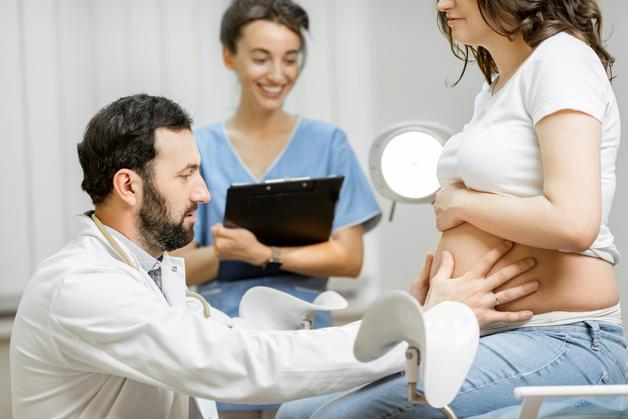Energy often returns, nausea tends to ease, and those first flutters can steal your breath for a moment of quiet joy. The second trimester of pregnancy, from week 14 to week 27, brings practical questions too. When will movement be regular, which tests matter, how much weight gain is healthy, and what symptoms deserve attention right now, not later. You want clear facts, reassurance, and steps you can act on today. That is exactly what follows, with science translated into everyday decisions you can make with confidence.
Fetal development and maternal changes, week by week
Weeks 14 to 16, early second trimester growth
- The fetus lengthens and starts to look more proportional. Fingers and toes are fully formed, nails begin to appear, and facial features sharpen.
- Organ maturation accelerates. The four chamber heart beats in a coordinated pattern, kidneys produce urine that contributes to amniotic fluid, and the diaphragm practices tiny breathing like motions.
- The nervous system becomes more active. Primitive reflexes such as sucking and swallowing appear, and spontaneous movements increase.
- Ultrasound shifts from crown rump length to biometric indices. Clinicians track biparietal diameter, head circumference, femur length, and abdominal circumference across visits to confirm a steady growth curve. One number by itself rarely tells the whole story, so serial measurements matter.
- How you might feel. Nausea often fades, energy improves, a small bump becomes visible, and you may notice round ligament twinges as the uterus enlarges. If movement is not yet reliable, that is still very typical.
Tip to remember, growth is assessed over time, one outlier does not define the pregnancy.
Weeks 17 to 20, mid trimester and the first movements
- Movement becomes perceptible. Many parents sense quickening in pregnancy as bubbles, taps, or soft flutters between week 18 and week 20. It can arrive earlier with subsequent pregnancies, or a little later with a first baby or a posterior placenta.
- Sensory development expands. The inner ear structures transmit sound, and the fetus may react to loud noises or voices. Fine lanugo hair and a creamy protective coating called vernix appear on the skin.
- The 20 week scan. A detailed fetal anatomy ultrasound evaluates the brain, spine, heart, kidneys, limbs, stomach and bowel, facial features, placenta position, and amniotic fluid. Sex can often be identified if desired and clearly visible.
You wonder whether a single ultrasound measurement outside the average range is alarming. Usually no, the next scan and clinical context clarify what is variation and what needs follow up.
Weeks 21 to 24, growth and more predictable patterns
- Brain growth continues, sleep wake patterns begin to appear, and movements organize into cycles of activity and rest. Lung branches multiply, though full air exchange requires later development of alveoli and surfactant.
- You may notice a stronger routine of kicks after meals or in the evening. Patterns matter more than absolute numbers at this stage.
Weeks 25 to 27, approaching the third trimester
- Rapid brain growth continues, and fat deposits under the skin increase. Movements feel stronger and more defined, sometimes visible at the surface.
- Survival after very preterm birth improves with each advancing week, yet lungs, temperature control, feeding, and immune function remain immature at the end of the second trimester of pregnancy. That is why prevention and timely care matter.
- Expect the glucose screen for diabetes in this window, and renewed focus on sleep comfort, left side lying with pillows for support, and early planning for birth.
Your body in the second trimester of pregnancy, symptoms and relief
Common shifts many welcome
- More energy, a clearer appetite, and a visible bump. Some notice first drops of colostrum later in the second trimester of pregnancy.
- Skin changes such as linea nigra and melasma can appear. Hair may feel thicker, nails may grow faster.
Typical discomforts and what helps
- Lower abdomen or groin twinges, often from ligament stretch. Simple options for round ligament pain relief include pacing activities, gentle stretching, position changes, and a maternity belt if your clinician agrees.
- Back or pelvic girdle aches. Think posture, regular light movement, and a pregnancy physiotherapist for tailored strategies.
- Heartburn during pregnancy and constipation. Try small meals, less trigger foods, more fiber with plenty of water, and clinician approved antacids or stool softeners when needed.
- Leg cramps during pregnancy. Hydration, gentle calf stretching before bed, and a check on magnesium and calcium intake can help.
- Nasal congestion or gum sensitivity. Saline sprays, a humidifier, and diligent oral hygiene support comfort.
Tractice contractions, what is normal
- Braxton Hicks contractions second trimester feel like irregular tightening that is usually brief and not painful. They often settle with rest or hydration.
- Seek care if tightenings become painful and regular, or if they accompany bleeding, leakage of fluid, fever, or any symptom that worries you.
Red flags, call now rather than later
- Heavy bleeding, a gush or ongoing leak of fluid, severe or persistent abdominal pain.
- Signs of preeclampsia second trimester such as severe headache, visual changes, or sudden swelling of the face or hands.
- Fever that does not resolve, or a clear decrease in movement once movement has been regular for you.
Prenatal tests and appointments in the second trimester of pregnancy
Visit rhythm and routine checks
- A typical prenatal visits schedule for second trimester is every four weeks for uncomplicated pregnancies. Vital checks include blood pressure, weight, urine dip for protein and glucose, fetal heart rate by Doppler, and fundal height.
- If risk factors exist, your team may add cervical length ultrasound or more frequent monitoring.
Screening and diagnostic options
- Maternal serum screening. Quad or triple screening between week 15 and week 22 estimates the chance of chromosomal conditions and neural tube defects. Screen results guide next steps.
- The 20 week anatomy scan. See above for scope and purpose.
- Gestational diabetes screening timing. The glucose challenge usually occurs between week 24 and week 28. Elevated results lead to a glucose tolerance test timing protocol that confirms or rules out gestational diabetes.
- Blood counts and iron. Hemoglobin and hematocrit are checked to detect iron deficiency. Diet guidance and supplements close the gap when needed.
- Rh factor testing during pregnancy. If you are Rh negative, repeat antibody screening informs the timing of Rho D immune globulin to prevent sensitization.
- Infection screens based on local protocols, for example syphilis or HIV, may be repeated.
- Amniocentesis second trimester. This diagnostic test, often performed after week 15, can clarify genetic or structural questions that screening raises. It carries a small procedure related risk, you and your clinician balance the certainty it offers with that risk.
Vaccines, dental care, and prevention
- Vaccination during pregnancy second trimester. Seasonal influenza and COVID vaccines can be given during pregnancy. Tdap is usually scheduled in the early third trimester to optimize newborn antibody protection.
- Dental care during pregnancy is safe and recommended. Routine cleanings and treatment of infections help protect you and the baby, let your dentist know you are pregnant.
Nutrition, weight gain, supplements
You might ask, how many extra calories do I need in the second trimester of pregnancy. More than the first trimester, but not dramatically more. Quality matters more than quantity.
Weight gain and energy
- Weight gain guidelines second trimester often translate to about one pound per week for someone starting at a normal body mass index, with personalized targets if your baseline weight is lower or higher. Your clinician will tailor this to you.
- Focus on nutrient dense choices rather than strict calorie counting, think protein rich foods, whole grains, colorful fruits and vegetables, and healthy fats.
Micronutrients that pull extra duty
- Iron supports the expanded maternal blood volume and fetal stores. Consider iron rich foods and supplements if advised.
- Folate continues to matter for cell growth, maintain your prescribed dose.
- Calcium and vitamin D support skeletal development.
- Iodine, choline, and DHA aid brain and eye development. Choose safe seafood during pregnancy like salmon or sardines two times per week, or consider a prenatal DHA supplement if intake is low.
Smart food safety
- Skip high mercury fish like shark or swordfish, skip unpasteurized dairy, and avoid raw or undercooked meats and eggs. Heat deli meats until steaming to reduce listeria risk.
- Wash hands, separate cutting boards for raw foods, and store leftovers safely.
Supplements that simplify decisions
- Prenatal vitamins importance lies in covering baseline needs. Avoid excess preformed vitamin A, called retinol, unless specifically advised.
Exercise, pelvic floor, and daily movement
What is a reasonable target for activity in the second trimester of pregnancy. Enough to feel your heart rate rise and your mood lift, not so much that you cannot carry on a conversation.
- Exercise during pregnancy second trimester supports cardiovascular fitness, mood, sleep quality, and preparation for labor. Walking, swimming, stationary cycling, prenatal yoga, and gentle strength training are popular options.
- Aim for about 150 minutes of moderate activity weekly if your clinician agrees, and sip water regularly. Stop if you feel dizzy, short of breath in a new way, or you have pain.
- Pelvic floor exercises Kegels second trimester help support bladder control and pelvic organs. Combine brief contractions with full relaxations, and consider a pelvic health physiotherapist for technique checks.
- Core stability matters. Favor transverse abdominals, avoid intense supine crunches after mid pregnancy, and think long spine with breath coordinated activation.
Activities to skip for now, contact sports, activities with a fall risk, scuba diving, very hot environments including hot tubs and saunas.
Travel, work, and everyday safety
- The second trimester of pregnancy is often the smoothest window for trips. For travel safety in pregnancy, check airline policies, carry your prenatal records, walk and stretch calves on long journeys, and consider compression stockings if you have deep vein thrombosis risk factors.
- Car safety, wear the lap belt low under the belly and the shoulder belt diagonally across the chest.
- At work, plan short breaks, adjust your chair and desk height, avoid heavy lifting, and discuss modified duties if needed.
Everyday exposures, limit strong solvents and paint fumes, avoid changing cat litter, and review any over the counter medicines or herbal products with your clinician.
Sex, bonding, and emotional health
- Sex is typically safe in the second trimester of pregnancy unless your care team has advised otherwise, for example with placenta previa or active bleeding. Experiment with positions that decrease abdominal pressure and honor comfort.
- Feeling movement can deepen connection. Fetal movement counting becomes meaningful once movement is regular for you. Use kick counts guidance from your care team, and call if there is a clear reduction from your usual pattern.
- Emotional ups and downs are normal. Consider brief check ins with your partner, mindfulness, and stress management second trimester routines, for example short walks outside or guided relaxation.
Special scenarios and common complications
- High risk contexts such as advanced maternal age or twins bring closer follow up and tailored nutrition. Your team might add cervical length scans or specialized consultations.
- Placenta previa risk factors are assessed on the anatomy scan. Many low lying placentas migrate upward as the uterus grows. Any bleeding warrants contact with your clinician.
- Placental abruption presents with pain, bleeding, and fetal distress, this needs urgent care. Some sources call it placenta abruption warning signs, your team will use the medical term placental abruption.
- Growth monitoring continues through fundal height and ultrasound if needed. Watch for fetal growth restriction signs such as lagging measurements across visits rather than a single low percentile reading.
- Hypertensive disorders are tracked with blood pressure, urine protein, and symptom checks, recall the signs of preeclampsia second trimester list above.
- Urinary infections deserve prompt treatment in pregnancy.
- Certain exposures, such as parvovirus B19 or cytomegalovirus, prompt targeted testing and counseling.
Planning for birth and postpartum
- Use the second trimester of pregnancy to draft a birth plan second trimester that lists preferences and flexibility. Consider pain relief options, support people, and your approach to immediate newborn care.
- Education helps. Enroll in childbirth and breastfeeding classes, and ask about hospital practices that matter to you.
- Start maternity leave planning during pregnancy, explore benefits and timing, and map out household support for the early weeks.
- Car seat choice and installation take time, practice now and confirm a snug install later with a certified technician if available.
- Begin choosing a pediatrician during pregnancy, schedule a prenatal meet and greet to discuss office hours, after hours calls, feeding support, and approach to well child care.
Second trimester checklist and timeline
Weeks 14 to 16
Confirm screening plans, book the anatomy scan, review medications and supplements, and schedule a dental cleaning.
Weeks 17 to 20
Attend the 20 week scan, discuss placenta location and measurements, notice early movement, start registry and nursery planning, explore prenatal classes.
Weeks 21 to 24
Track movement patterns daily, adjust sleep supports, research car seats and pediatricians, review work leave options.
Weeks 25 to 27
Complete the glucose screen, repeat labs as advised, finalize postpartum support, refine birth preferences, and plan timing for third trimester vaccines.
Key takeaways
- The second trimester of pregnancy often brings more energy, clearer appetite, and the first distinct movements. Use this window to learn patterns, build healthy routines, and prepare for the months ahead.
- Regular care matters. Keep your prenatal visits schedule for second trimester, attend the anatomy scan, and complete diabetes screening at the advised gestational diabetes screening timing with follow up glucose tolerance test timing if needed.
- Nutrition supports both of you. Aim for balanced meals, follow weight gain guidelines second trimester, include iron, calcium, vitamin D, iodine, choline, and DHA, and choose safe seafood during pregnancy.
- Stay active with exercise during pregnancy second trimester, add pelvic floor exercises Kegels second trimester, and adjust intensity so you can still speak in full sentences.
- Learn the warning signs. Decreased movement once regular, heavy bleeding, severe pain, fever, or signs of preeclampsia second trimester deserve prompt contact with your care team.
- Everyday health counts. Keep dental care during pregnancy, keep vaccines up to date with vaccination during pregnancy second trimester, and use travel safety in pregnancy practices when you are on the move.
- Planning reduces stress. Outline a birth plan second trimester, start maternity leave planning during pregnancy, and begin choosing a pediatrician during pregnancy.
Support is real and accessible. Your midwife or obstetrician can personalize these steps to your history and goals, and you can also download the application Heloa for personalized tips and free health questionnaires for children.
Questions Parents Ask
How big is my baby during the second trimester?
Sizes change fast in this window. As a rough guide: by mid-second trimester the baby moves from a few inches and a few dozen grams to several inches and several hundred grams. For example, around 16–20 weeks many babies measure roughly 12–16 cm (head-to-rump/head-to-heel varies by how measurements are reported) and weigh a few hundred grams; by 24–27 weeks length is often in the 25–37 cm range and weight may be around 500–900 g. These are only estimates — growth varies a lot from one pregnancy to another. Your ultrasound reports and serial measurements give the best picture for your pregnancy, so don’t hesitate to ask your clinician to explain the numbers you receive.
Can I take ibuprofen or other over-the-counter painkillers?
It’s understandable to want safe pain relief. Frequent use of NSAIDs (ibuprofen, naproxen, or high-dose aspirin) is generally avoided in pregnancy, especially later in pregnancy, because of risks such as altered fetal kidney function or effects on circulation. Paracetamol (acetaminophen) is usually the preferred first-line option for short-term pain relief, but use the lowest effective dose and check with your care team if you need repeated doses. If you take a low-dose aspirin because a clinician prescribed it (for example to lower preeclampsia risk), continue that only under medical advice. If pain is ongoing or your condition needs regular medication, try to discuss alternatives and risks with your provider so you feel supported and informed.
Is it safe to have caffeine in the second trimester?
Yes, modest caffeine intake is commonly considered safe. Many health authorities suggest keeping caffeine to about 200 mg per day or less (roughly the amount in one regular cup of coffee, though amounts vary by brew). Tea, chocolate, and some soft drinks also contain caffeine, so it helps to add totals across sources. If cutting back feels hard, try switching some drinks to decaf or lower-caffeine options. If you have questions about how much is right for you or about pregnancy complications that might change the recommendation, your clinician can offer personalised advice.

Further reading:
- 2nd trimester pregnancy: What to expect — https://www.mayoclinic.org/healthy-lifestyle/pregnancy-week-by-week/in-depth/pregnancy/art-20047732
- 13 weeks pregnant guide – Best Start in Life — https://www.nhs.uk/best-start-in-life/pregnancy/week-by-week-guide-to-pregnancy/2nd-trimester/week-13/
- The Second Trimester — https://www.hopkinsmedicine.org/health/wellness-and-prevention/the-second-trimester









